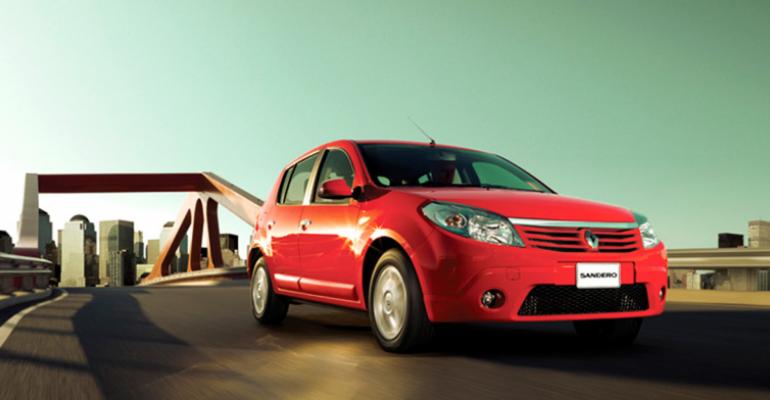LONDON – The European Commission is hoping new free-trade agreements between the European Union and Colombia and Peru will be the springboard for penetration by European auto makers into markets that pretty much have been off-limits to them in the past.
The FTAs will remove significant tariffs on motor vehicles with spark-ignition, reciprocating- piston internal-combustion engines. Current tariffs of 35% for EU exports to Colombia and 9% for exports to Peru, will be phased out over the next eight and 11 years, respectively.
The agreements also will lift tariffs on European-made auto parts and, according to EU Trade Commissioner Karel De Gucht, “create a stable framework to boost trade and investment between the EU and the Andean region and establish a foothold for European business.”
But the framework needs work. Europe’s auto makers are concerned that new biofuels legislation in Colombia, with 46 million residents the larger of the two markets, could put their vehicles at a serious disadvantage.
The country is introducing a B10 bioethanol requirement, and there is worry it could demand even more biofuels in future gasoline mixes. Peru, with 29 million residents, is introducing the B7 standard used in Europe. In both cases, the laws are partly designed to promote indigenous production of biofuels from sugarcane and palm trees.
As regards B10, “Our engines in Europe and those made locally are not adapted to this blend, and it would give shorter life to the vehicles,” says Eric Bergelin, trade specialist with ACEA. The European auto makers group has asked for a World Trade Organization inquiry into whether the B10 rule amounts to an illegal trade restriction.
“This is ongoing, but B10, or perhaps even B16 or B20, presents a very somber perspective and could seriously hamper our exports to Colombia,” Bergelin says. “We don’t want B10. We don’t have B10 in Europe, we have B7 and E10, which are different, and we have suggested this to Colombia. But they want to promote their own legislation.”
Current auto exports from Europe to Colombia are low, “and the expenditure needed to adapt for such a small market really makes it very difficult,” he adds. “It’s a potential non-tariff barrier for us.”
A spokesman for the Society of Motor Manufacturers and Traders in London says removal of all non-tariff barriers is essential for any abolition of duties under a free-trade deal to be effective. “Fairness is critical, and trade strategies must be aligned with policy in supporting manufacturing and export-driven growth,” the official says.
A spokesman for Colombia’s Ministry of Commerce says De Gucht has agreed to discuss ways to boost EU investment in Colombia's automotive sector under the FTA.
"This trade agreement was established to allow our industries not only to have a preferential trade relationship...but also so that we can import, duty-free, raw materials and machinery to overhaul our businesses. It is appropriate to see the deal as a source of technology transfer for the entire automotive chain."
Overseas auto makers already operating in Colombia include Renault, General Motors, Mazda and Hino. Production by the country's automotive sector, which includes buses and motorcycles, grew 16% to 131,510 units in 2011, according to export agency Proexport Colombia. The industry, which also produces auto parts, not only supplies the local market but also exports to South and Central America.
Peru’s automotive industry is limited to low-volume production of auto parts and perhaps offers EU auto makers better prospects of selling Europe-made cars.
The Ministry of Commerce spokesman says that despite the prospect of greater investment, the FTA’s benefits for the EU "certainly present a challenge" for Colombia's auto industry, especially in the high-end sector in which European vehicle imports are concentrated.
Mario Hidalgo Antigoni of the Automobile Association of Peru says the new deal provides an opportunity for European auto makers to "improve their competitiveness against Asian brands in Peru."
According to the AAP, the EU accounted for 12.6% of vehicle imports into the country in the year’s first half, with Asia – mainly Japan, South Korea and China – taking 75%. Hidalgo says Volvo, Mercedes and Scania currently are the leading European automotive exporters to Peru.
– with Jonathan Dyson in Lima




